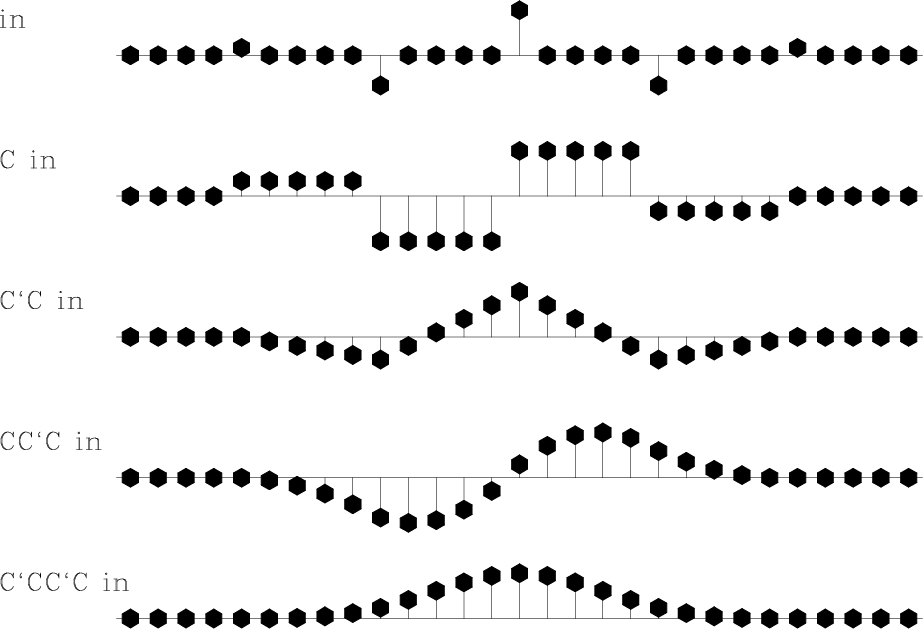|
|
|
|
Antialiasing of Kirchhoff operators by reciprocal parameterization |
Cascading operators of causal and anticausal numerical integration is an efficient way to construct the desired filter shape.
Triangle filters approximate the ideal (sinc) low-pass time filters. The idea of using low-pass filtering for antialiasing (Gray, 1992) is illustrated in Figure 1. When a steeply dipping event is included in the operator, its counterpart in the frequency domain wraps around to produce the aliasing artifacts. Those are removed by a dip-dependent low-pass filtering.

|
|---|
|
amolow
Figure 1. Schematic illustration of low-pass antialiasing (triangle filters). The aliased events are removed by low-pass filtration on the temporal frequency axis. The width of the low-pass filter depends on dips of the aliased events. |
|
|
The method of low-pass filtering is less evident in the case of a
three-dimensional integral operator. We can take the length of a
triangle filter proportional to the absolute value of the time
gradient (Lumley et al., 1994), the maximum of the gradient
components in the two directions of the operator space
(Abma et al., 1999), or the sum of these components. The latter
follows from considering the 3-D operator as a double integration in
space. Decoupling the 3-D integral into a cascade of two 2-D operators
suggests convolving two triangle filters designed with respect to two
coordinates of the operator. In this case, the length of the resultant
filter is approximately equal to

|
|---|
|
amoflt
Figure 2. Building the smoothed filter for 3-D antialiasing by successive integration of a five-point wavelet. C denotes the operator of causal integration, C' denotes its adjoint (the anticausal integration). The result is equivalent to the convolution of two equal triangle filters. |
|
|
The temporal filtering method was proven to be an efficient tool in the design of stacking operators of different types. However, when the operator introduces rapid changes in the length and direction of the traveltime gradient, it leads to an inexact estimation of the filter cutoff (triangle length for the method of triangle filtering) at the curved parts of the operator. Consequently, the high-frequency part of the output can be distorted, causing a loss in the image resolution.
|
|
|
|
Antialiasing of Kirchhoff operators by reciprocal parameterization |